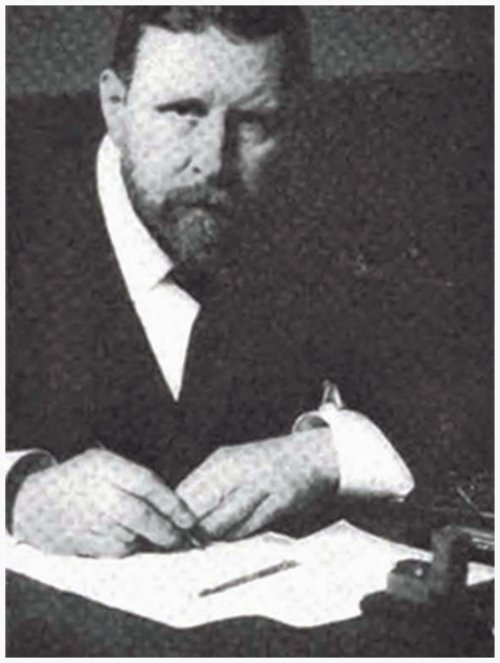Bram Stoker's Dracula: The Irish Roots of a Halloween Icon
Welcome back to another fascinating installment of our Halloween blog series at Saints & Scholars. Today, we're turning the spotlight on Bram Stoker, the Irish literary figure who brought the legendary Count Dracula to life and forever changed how we celebrate Halloween.
Born November 8, 1847, in the coastal area of Clontarf, Dublin, Abraham 'Bram' Stoker faced a challenging childhood, confined to bed due to a debilitating illness until he was seven. During these years, his mother, Charlotte Blake, captivated him with tales of Irish folklore and the horrific realities of the Irish Famine. Remarkably, Stoker recovered from his illness and went on to attend Trinity College in Dublin from 1864-1870. There, he excelled in athletics and studied mathematics, also becoming an active member of the University's Philosophical Society. His life took a significant turn when he impressed actor Sir Henry Irving with a glowing review of his performance in Shakespeare's 'Hamlet.' As a result, Irving offered him a managerial role at London's Lyceum Theatre, a position that profoundly influenced his literary career. These experiences set the stage for Stoker to become the compelling storyteller we celebrate today.
Published in 1897, 'Dracula' was not just the result of Stoker's vivid imagination but also the culmination of seven years of meticulous research into European folklore and vampire myths. In the novel, Count Dracula is introduced as a sophisticated yet enigmatic figure, a Transylvanian nobleman who resides in a remote castle. As the story unfolds, his more sinister aspects come to light. Dracula is described as having sharp, pointed teeth, piercing red eyes, and a pale, almost corpse-like complexion. His powers are both captivating and horrifying; he can shape-shift into various forms, control animals like wolves and bats, and exert influence over people. Despite his charm and intelligence, he is a predator, embodying the fears and anxieties of the era.
While many associate Count Dracula with Vlad the Impaler, a 15th-century Romanian prince known for his brutal rule, it's worth noting that Bram Stoker, despite his meticulous research into European folklore, never actually visited Romania. Instead, his inspiration for the iconic character may have been much closer to home, deeply rooted in Irish folklore. For instance, the legend of the Abhartach (pronounced: Ah-bart-ack), a malevolent dwarf who was a blood-drinker, bears striking similarities to Dracula. Another Irish tale that could have influenced Stoker is that of the Dearg-Due (pronounced: Jarg-Doo), an undead woman who seduces and drains the blood of men. Even the name 'Dracula' could be rooted in the Irish term 'dreach-fhoula' (pronounced: drack-oola), which means 'bad or tainted blood’.
Over the years, Dracula has evolved from a literary character to a Halloween icon, a transformation largely fueled by the 1931 film adaptation starring Bela Lugosi. This film set the stage for Dracula to become a symbol of the holiday's spooky and supernatural elements. Today, the character of Dracula is an integral part of Halloween celebrations, influencing everything from costumes to movies and even Dracula-themed haunted houses. This cultural impact extends beyond just the Halloween season, leaving its mark in films, TV shows, and books year-round. Stoker's legacy is further immortalized by his great-grandnephew, Dacre Stoker, who published 'Dracula: The Un-Dead' in 2009. Based on Bram Stoker's own notes, this book ensures that the tale of Dracula will continue to captivate and haunt us for years to come.
As we toast to another Halloween season here at Saints & Scholars, let's raise our glasses to Bram Stoker. His storytelling has not only enriched Irish culture but has also added a layer of mystique and tradition to our Halloween festivities. Sláinte! 🍻
INTERESTING tID-bITS:
The first vampire book was not 'Dracula' but 'Carmilla,' a novella by Joseph Sheridan Le Fanu, another Irish writer. Published in 1872, 'Carmilla' predates 'Dracula' by 25 years and also features a blood-drinking antagonist. It's fascinating to think that the Irish had a significant influence on the vampire genre even before 'Dracula' came into existence.
A Spooky Coincidence? In a twist of fate or perhaps eerie coincidence, local legend has it that in the year 'Dracula' was published (1897), a creature's offspring wreaked havoc in Howth, County Dublin, where Stoker was born, by feasting on people's blood. While this tale is more folklore than fact, it adds an extra layer of mystique to the story of Bram Stoker and his iconic creation.



